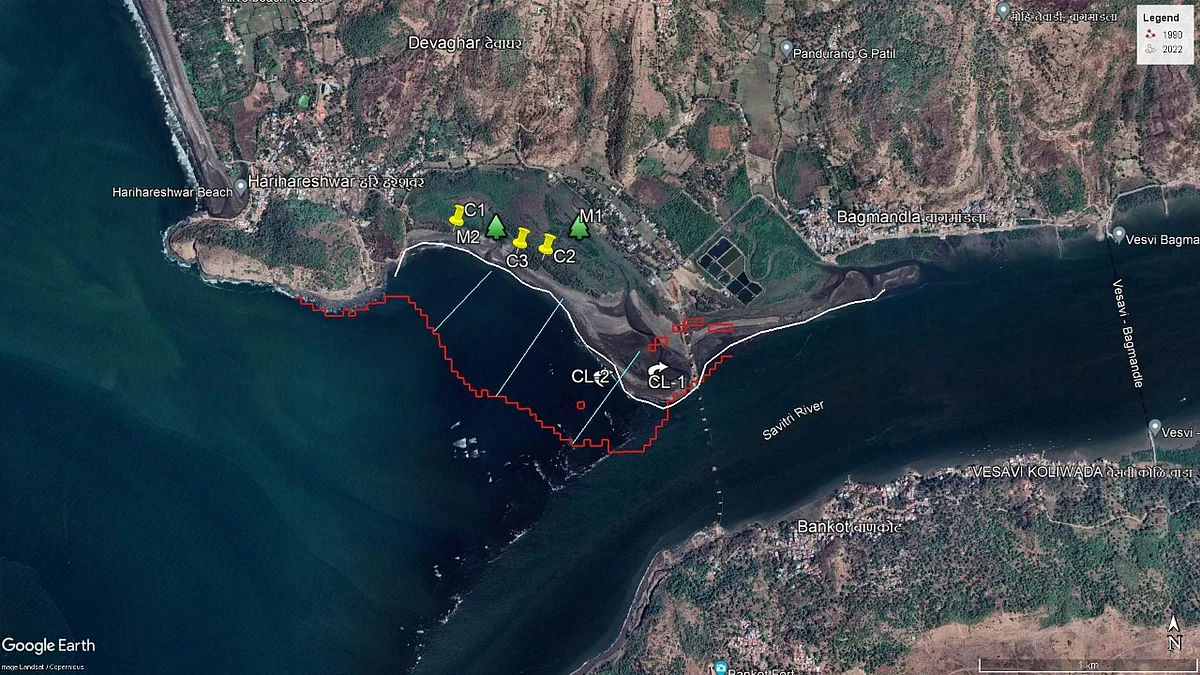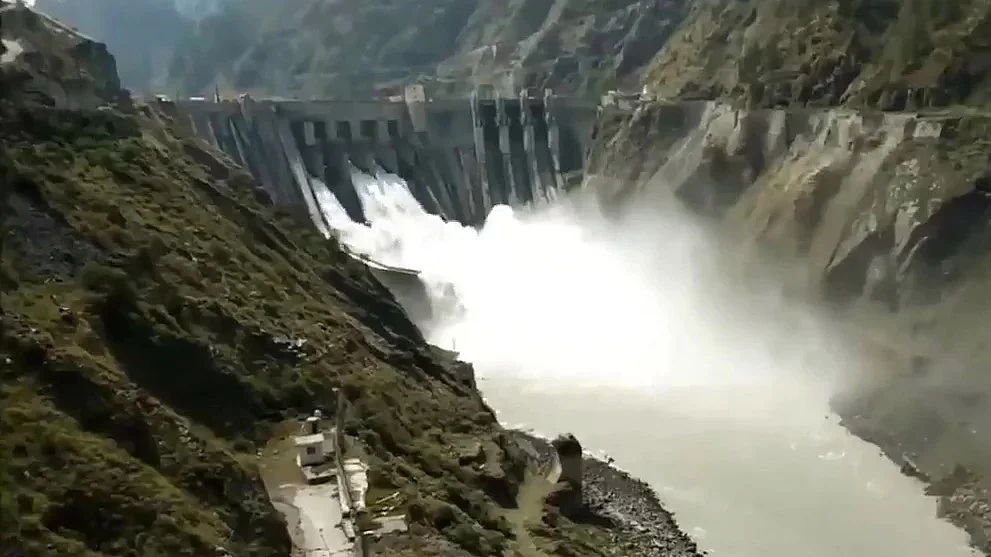A 55-hectare area near Devghar in coastal Raigad district, which is nearly 10 times size of Mumbai's Wankhede Stadium, has submerged indiciating coastal inundation and extreme shoreline erosion.
Pune-based Srushti Conservation Foundation (SCF), a non profit organisation conducted the study close to the mouth of Bankot Creek which has a 1.5-kilometer-long beach area.
Preliminary data shows that between 1990 and 2022, there was a total loss of around 55 ha of coastal ecosystems, including mangrove, creeklets, mudflats, and sandy coasts, and that almost 300 metres of shore area was eroded.
‘’It was observed that the satellite-derived shoreline (unsupervised classification-based waterbody boundary) had now shifted 300-500 meters towards land. Apart from this it was clear that mangrove and Casuarina plantation was also not able to withstand the loss of sediment and eventually they got uprooted,” said Dr Deepak Apte, Managing Director, SCF.
The impact on the study site
At present, the Casuarina plantation (Coastal She-oak or Sura in Marathi) extends along the north-south belt on Devghar Beach. However, the beach-side plantation was found to be getting destroyed due to continuous loss of sediment resulting in the erosion of the shore and also change in sediment profile from a clay-silty dominated seascape to coarse sand dominated seascape, the analysis read.
The satellite images further showed that mangroves were distributed unevenly in this patch. In the central part of this patch, dead mangroves were observed on a large scale.
In the peripheral areas of this patch, mangroves were dominated by the bushy and sparsely distributed Avicennia marina (gray mangrove). The inner areas were dominated by Rhizophora mucronata (Asiatic mangrove). In exceptional cases, Aegiceras corniculatum (black mangrove) could be observed along with Acanthus ilicifolius (Sea Holly).
In 2020, the landfall of Cyclone Nisarga close to the coast of Devghar, saw the death of trees, shrubs, and (approximately 5 ha) of mangrove species like Avicennia marina.
“Some of these patches are now recovering but large tracts of mangrove are already on the verge of death, most probably due to a shift in sediment structure from muddy to sandy nature,” said Apte.

The topographical view of the shoreline | Srushti Conservation Foundation (SCF),
Lessons from the study site
The shoreline is changing steadily in several parts of the state and there is a need for a systematic assessment of the same, the study suggested. For example, in many areas, mangroves are expanding in agriculture lands due to saltwater ingress while in many areas, loss of sediment causing large scale erosion.
“Climate change related sea-level rise will further worsen the situation. The Government should commission a study to seek solutions to deal with the changing seascape. We are currently doing ad hoc interventions which will only worsen the situation,” Apte said, adding that for example, promotion of kharland bunds which essentially kills mangroves is a favourite but ill-conceived remedy as a universal solution.
“It will not only erode our natural barrier, it will facilitate erosion in the long run.”
Preliminary solutions suggested by the study
● Climate change facilitated increase in the sea level and coastal inundation will put coastal assets, investments and communities at risk over next few decades. Thus, the State should focus on developing Shore Management Policy. Use of cutting-edge science will be vital in developing such a policy.
● Launch community-based climate resilience, adaptation and awareness programme.
● Scientific management across creek areas to maintain optimal depth and water level
● Reviewing the Kharland Bund Policy as construction of bunds to prevent salt water
ingress will only shift the problem from one place to another and it is facilitating large
scale mangrove mortality.
● Review efficacy of sea walls and its impact on shore erosion in nearby areas











